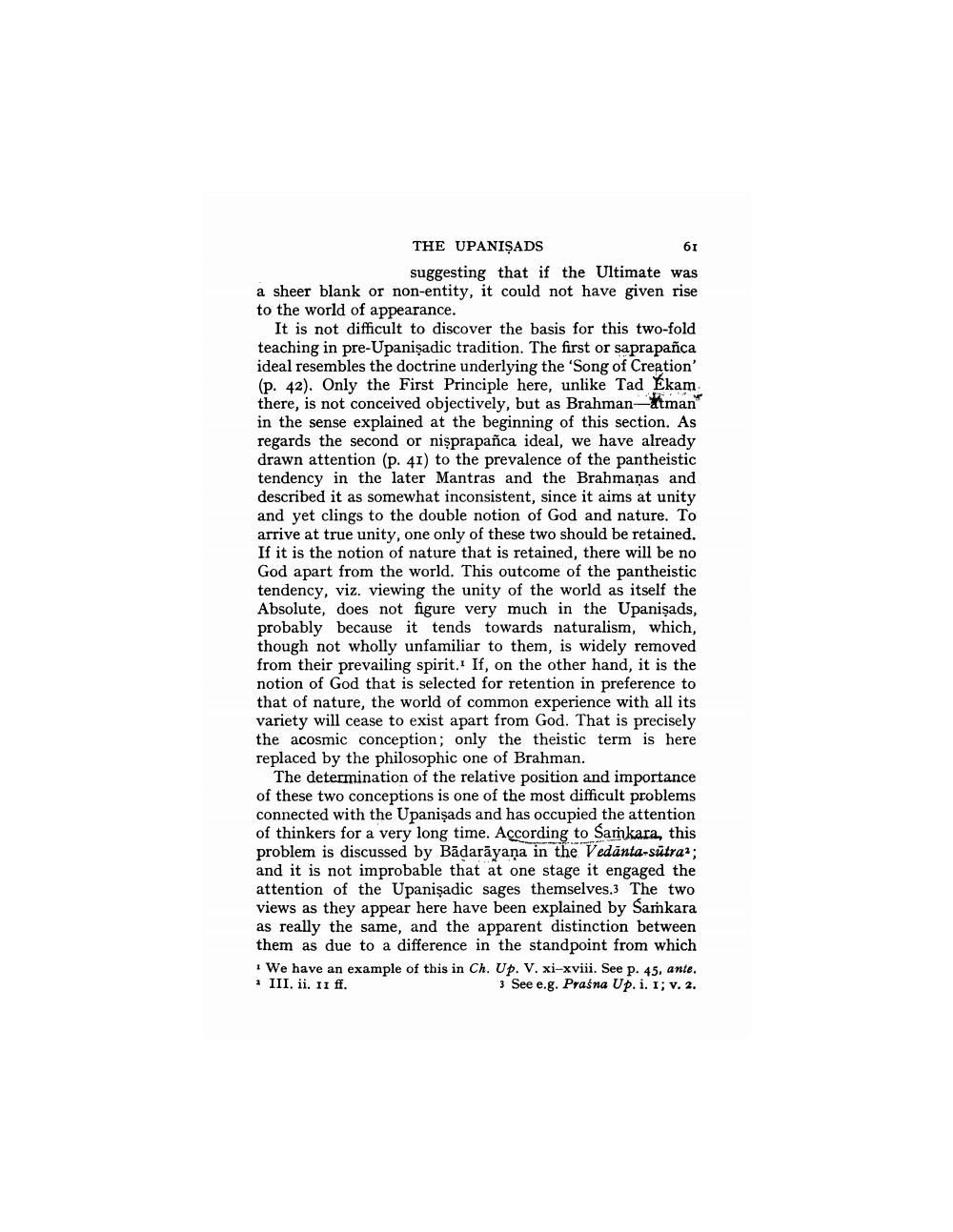________________
THE UPANIŞADS
61 suggesting that if the Ultimate was a sheer blank or non-entity, it could not have given rise to the world of appearance.
It is not difficult to discover the basis for this two-fold teaching in pre-Upanişadic tradition. The first or saprapanca ideal resembles the doctrine underlying the 'Song of Creation' (p. 42). Only the First Principle here, unlike Tad Ekam there, is not conceived objectively, but as Brahman-atman in the sense explained at the beginning of this section. As regards the second or nişprapanca ideal, we have already drawn attention (p. 41) to the prevalence of the pantheistic tendency in the later Mantras and the Brahmaņas and described it as somewhat inconsistent, since it aims at unity and yet clings to the double notion of God and nature. To arrive at true unity, one only of these two should be retained. If it is the notion of nature that is retained, there will be no God apart from the world. This outcome of the pantheistic tendency, viz. viewing the unity of the world as itself the Absolute, does not figure very much in the Upanişads, probably because it tends towards naturalism, which, though not wholly unfamiliar to them, is widely removed from their prevailing spirit. If, on the other hand, it is the notion of God that is selected for retention in preference to that of nature, the world of common experience with all its variety will cease to exist apart from God. That is precisely the acosmic conception; only the theistic term is here replaced by the philosophic one of Brahman.
The determination of the relative position and importance of these two conceptions is one of the most difficult problems connected with the Upanişads and has occupied the attention of thinkers for a very long time. According to Samkara, this problem is discussed by Bādarāyana in the Vedānta-sūtrak; and it is not improbable that at one stage it engaged the attention of the Upanişadic sages themselves.3 The two views as they appear here have been explained by Sarkara as really the same, and the apparent distinction between them as due to a difference in the standpoint from which
We have an example of this in Ch. Up. V. xi-xviii. See p. 45, ante. 1 III. ii. 11 ff.
3 See e.g. Praśna Up.i. 1; V. 2.




